Вы здесь
Sights of city of Astana.
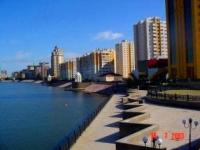
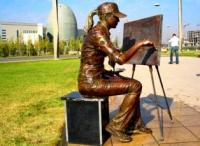
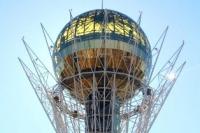
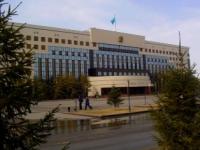
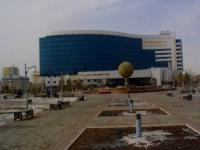
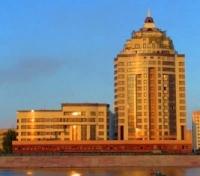
Astana Tour & Excursions.
“I've known rivers:
I've known rivers ancient as the world and older than the flow of human blood in human veins. My soul has grown deep like the rivers”
Langston Hughes.
Heritage tourism in Astana.
If you want to get some idea of what Akmola, Tselinograd or Akmolinsk was like, you should do it now. Many old houses on the right bank of the river are still standing, mostly in the area between the railway station and Moscow Street, but also east of Pobedy Avenue.
There is little hope, however, that many of them will survive the coming years, since systematic neglect has left them in such д state that razing them seems to be the only practical solution. Curiously, and in contradiction to the norm, this city's most interesting sights all date from very recent times.
As you drive from the airport towards the city, the first thing that stands out from a distance is a very tall structure on the right, crowned by a golden, glittering globe. This is the Baiterek observation tower, the "Tree of Life".
It was President Nazarbayev's idea, and he also has a clear view of it from his living room, for his new residence is located in full sight of the 97-metre-high structure. According to legend, the magic bird Samruk would lay a golden egg on the top of every tree that was out of reach to humans.
All the secrets of human desire and passion were hidden inside the egg, as well as the answers to all their dreams for the future. With the building of Baiterek the egg is no longer out of reach, since two elevators whisk visitors up to the golden, gleaming globe set within the opening concrete "branches" of the white-trunked tower.
From this vantage point, looking out through the gold-tinted glass, you may not grasp the secret of life's passions and desires and the key to their satisfaction - but at least you can admire how the President's vision of the future is rapidly taking shape.
Baiterek occupies the centre of a huge quadrangle, the showpiece of Astana's recent development. Occupying the eastern end of this long rectangle is the marbled splendour of the Presidential Palace, while facing it, albeit from a considerable distance, is the glass- fronted facade of the KazMunaiGaz building in the west.
Between the country's political focal point on one side and the headquarters of the country's most powerful business corporation on the other, two rows of impressive buildings - housing top government and business offices - make up the remaining sides of this elongated rectangle.
It makes a powerful statement of economic wealth - no doubt the intention - but it also happens to be a pleasant place to walk, since the quadrangle's inner space has been made into an attractive park, with flowerbeds and modern bronze statues of stylized traditional figures.
Walk towards the KazMunaiGaz fagade and on your left you'll see the Islamic Centre and country's largest place of worship, the Nur Astana Mosque, completed in 2005 and a gift from the Emir of Qatar to the citizens of Kazakhstan.
With space enough for 7,000 worshippers, its 40-metre height symbolizes the age of Mohammed when he first had revelations from God, and whose gleaming, 63-metre-high minarets symbolize the Prophet's age when he departed from the world of man.
You can enter the mosque on any day except Friday. A wide road leads north from here towards the river and the right bank of the city. On a green hill to the left of the road, a colossal Kazakhstan flag waves in the steppe wind. This is the Independence Memorial, built in an area which was long-considered untouchable.
(Previously this was the site of the Victims of Totalitarism Memorial, which is now in the village of Malinovka, west of Astana.) Closer to the river is another grand dome supported by pillars. This is the Saltanat Reception Palace, where state and other official receptions and banquets are held.
Nearby is the Atameken Ethnic Memorial Park (6 Kabanbay Batyr Street), which features a 1.7-hectare model of Kazakhstan, highlighting many architectural and other interesting sites around the country. It is open from 11am to 11pm.
The large Central Park occupies the wedge of land created by a 90-degree bend in the Esil River; it is very popular with the city's residents, offering peace, shade and shelter from the dustiness of the streets - the constant construction and perennial winds of the steppe often combine to make walking around town unpleasant.
Within the park are cafes, a Fantasy World with carnival rides, ponds and many nooks and crannies where people relax on benches or picnic under the trees. Cross the bridge over the Esil River and the large building facing you is the Presidential Cultural Centre on Republic Avenue, a large, white building shaped like a giant yurt with a blue dome, which houses a large library, a concert hall and a museum of Kazakh history.
The museum in particular is well worth a visit, since it offers a very good overview of the origins and development of the Kazakh state. It features, among other things, a fascinating collection of gold dating from the Sak period, as well as many finds from excavations in Otrar, an original piece of the facade of the Mausoleum of Khoja Ahmed Yasawi in Turkistan, as well as that of the Aisha Bibi mausoleum near Taraz. There are works of art from modern-day Kazakhstan on the top floor.
In a building next to the Presidential Cultural Centre more than 3,000 paintings, sculptures and works of applied art are displayed in the Museum of Modern Art. Here too there are regular exhibitions of work by contemporary artists.
The interesting Saken Seyfullin Museum, dedicated to the statesman, poet, writer and philosopher (1894-1938), is located farther north at 80 Auezov Street, just off Seyfullin Street. The monument to the three renowned Kazakh jurists Tole Bi, Ayteke Bi and Kazybek Bi stands in front of the beautiful white building of the former High Court of Justice on Beybichilik Street/Omarov Street.
"The strength of a nation lies in its unity", reads the monument's pedestal in Kazakh, Russian and English. Also impressive is the monument to the Pioneers of the Virgin Lands (Pamyatnik tselinnikam) at 15 Munaytpasov Street.
A very beautiful Russian Orthodox church can be found in the second line of Republic Ave at 12 Khorkhyt St. The Constantine-Elena Church is one of the oldest preserved buildings in town. It was built within the Akmolinsk fortress in 1856, on the square where the Central Stadium is now located, and it was transferred to its present site in 1990.
The Roman Catholic church at 3 Tashenov St/Munaytpasov St, on the other hand, is new, and was built with regard to the relatively high concentration of people of German descent in Akmola Oblast. The largest Jewish synagogue in Kazakhstan is also located in Astana.
It is called Beit Rahel-Habbad Lubavich and was consecrated in 2004, in a beautiful park (11 Gumilyov St) near the Eurasian University. As a result of the cooperation of faiths in the city, consciously celebrated and fully promoted, Astana was awarded the honorary title of "City of Peace" by UNESCO in 1999.
Authority:
The guidebook across Kazakhstan. Authors Dagmar Schreiber and Jeremy Tredinnick. Publishing house "Odyssey".2010.
Photos by
Alexander Petrov.







